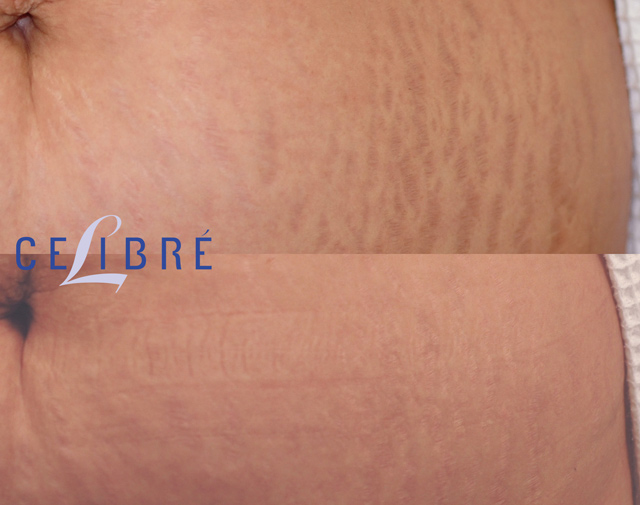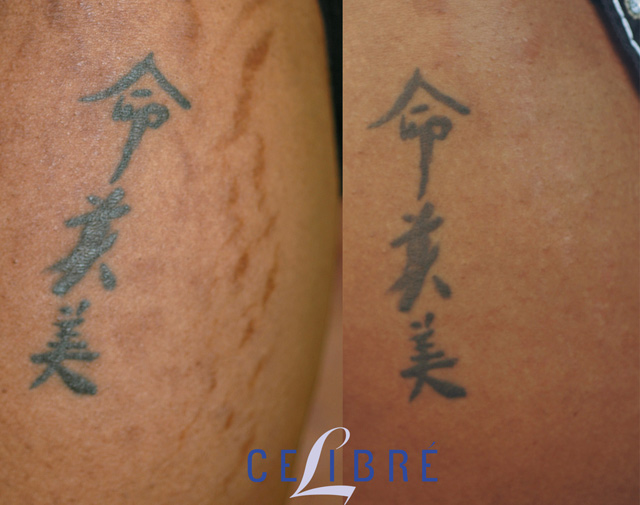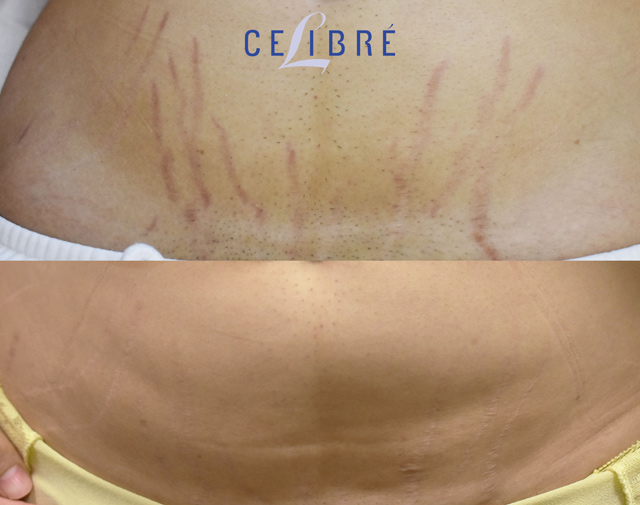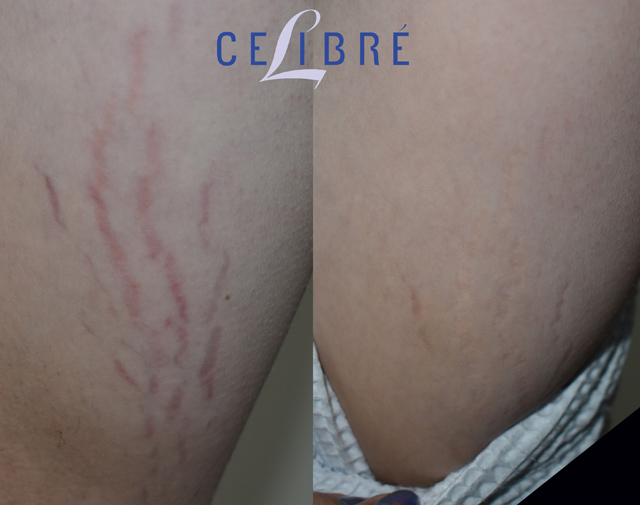Menu
Whether it’s the birth of a beautiful newborn or a recent unexpected weight gain, stretch marks are often the result. They can be textured (indented) or red, brown, or white. Lasers are a good option for the improvement of stretch marks, but it’s important to keep in mind that stretch marks are a type of scarring and are difficult to remove completely. Realistic expectations for improvement are an important part of treatment success.
















Red stretch marks occur most frequently in light and medium skin tones. These type of stretch marks appear when the trauma to the skin results in small blood vessels appearing in the area as part of the normal healing process. We use our Vbeam pulsed dye laser or the Sciton BBL (Intense Pulsed Light) to correct the redness associated with the small blood vessels.
Dark stretch marks occur in darker skin types that are susceptible to “hyperpigmentation”. Hyperpigmentation is a darkening of the skin in the area where an injury has occurred. For these patients, we use q-switched lasers to fade the darkening.
For textured (indented) stretch marks, increasing collagen in the area is key to improving the marks. When the skin stretches, the structural makeup can change. The epidermis (outer layer) and dermis (collagen layer) can thin out as they get pulled apart. By using lasers to create a thermal injury, we can help produce collagen to replace what has been lost in the stretching process.
The most difficult type of stretch marks to treat are white or light-colored. If the stretch marks are flat and white, there is no viable laser option. If they are white and textured, we can use lasers to stimulate the production of collagen to improve their appearance (see above bullet point).
